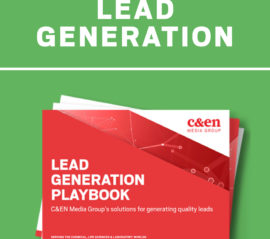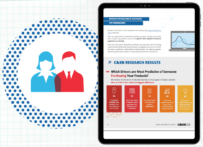Note: This blog post was updated in 2021 with more resources and guidelines.
Even before the pandemic canceled in-person events, one of the biggest advantages of a virtual symposium is the ease of connecting with people without ever leaving your seat. With the click of a mouse, attendees can tune in to a talk from a leading expert, interact with peers from other organizations, and visit booths in virtual exhibit halls. As a sponsor or exhibitor, this puts a highly relevant audience within reach, both during and after the virtual event.
It’s easy to stay in touch with leads generated at virtual trade shows because every attendee who registers provides detailed contact information, including their title, industry, and most importantly for your nurture campaigns, their email. In addition, and often the key benefit of participating in such an event, each time someone visits your virtual booth, you can see what collateral they downloaded, providing insight into the products and services that interest them most. You can also learn about their interests based on which talks they attended, and use their digital footprints to help nurture the sales process. Finally, virtual events simply make it easier for more people to attend. Such as scientists early on in their career who are not yet on the conference circuit, bu t are just as important to build relationships with.
This is all well and good, but what do you actually do when a host provides you a list of leads?
How do you maximize the information from these new contacts? In many ways, the rules for following up on virtual contacts are similar to in-person trade shows, so rest assured your tried-and-true tactics can also work in this evolving format.
To ensure no lead falls through, follow these guidelines.
Organize Your Leads
The virtual event is over, and you have a hefty list of leads that either you collected from visitors who dropped by your booth, or a spreadsheet of attendees provided by the conference host. Before you follow up, take the time to enter the information into your customer relationship management (CRM) database. Use the CRM to record thorough notes on who the people are, what kinds of questions they were asking, and what products and services interested them. If you have a lead scoring system already in place – great! You can use that here based off the amount of interactions an attendee had with your booth. If they stopped by on more than one occasions, asking specific product questions, they’re a lead that should move to the top of the sales list.
Either way, the next step is to connect potential leads with the appropriate people within your organization. Those leads who expressed interest in purchasing should be passed along to your sales team immediately. Those who had technical questions can go directly to a product manager. Others, such as students and researchers, can be flagged for your marketing and business development team. Because if they’re not a hot lead now, they very well may be in the future.
Get the Timing Right
It’s important to re-establish contact in a timely manner.
Begin reconnecting two or three days after the event, ideally reaching out no later than a week. Unless you had a direct interaction with someone who expects a phone call, e-mail is the preferred method of communication. A safe option is to send a post-show recap of the highlights from your booth and other non-competitors. Share any announcements that were made, but avoid sounding too much like a rehashed press release.
Be Helpful
When you follow up by e-mail, strive to be as helpful as possible with useful content, and get to the point right away. This especially important if you have new safety guidelines or demo processes in response to COVID-19.
If you met someone in the bioprocessing space, send them information about your single-use technologies – the pros, the cons, and how to do it right. Troubleshoot on their behalf; if they mentioned their lab was cramped, share equipment solutions that have a small spatial footprint. Are they back in the lab at all? Working with a smaller team in-person? How does your product or service fit in to their new work environment?
Our studies show that this is the type of customer service communication that greatly impacts buying behavior.
You can also play matchmaker, introducing a new lead to product experts that weren’t present at the symposium. This is another benefit of participating in virtual events – chats are recorded and transcripts are available. Conversations your sales representatives had with potential customers can be accessed to further nurture the lead.
One note though: don’t rush to close the deal. Be an honest and helpful resource and let the business grow from there.
With all communications, keep your message relevant, concise, and maximize your calls-to-action. For example, instead of saying “…for more information,” you could say “download this free white paper,” “request a free demo,” or “watch this video overview.”
The Link Remains
In some cases, the virtual booth may be available well after the symposium is over, and if your subject matter expert participated in a webinar or panel, that is most definitely going to be available on-demand later on.
Feed these materials in to your content marketing strategy. For your sales team, these links can be forwarded to parties that were unable to attend, as well, given them a reason to connect with their prospects. This is especially important if you hosted any additional booth activities, like a live chat with your scientists. Remind people that any talks you participated in are archived, and always provide the relevant links.
Get Social
Spend some time searching for your leads by name or email address on social media networks, such as Twitter and LinkedIn, and then follow them or request a connection. This is one key difference between an in-person event and a virtual one: attendees are much more likely to be digitally engaged on other platforms when they’re signed on to a symposium. Find them easily via the conference hashtag or the host’s own activity feed.
Before you send off that request, though, take a look at their feed. Do they actively engage with other attendees and their followers? Or are they entirely inactive? Essentially, don’t be… creepy about your follow. LinkedIn gives you an opportunity to write a note about why you should connect, too. Take full advantage of that opportunity, and don’t simply send a stock follow-request. Reach out to these new contacts to let them know you enjoyed meeting them at the virtual symposium, or are simply hoping to connect elsewhere if you missed each other. Pay attention to what they’re talking about on social media, and look for opportunities to share the content they post, or provide helpful content that you come across. Social media is a no-pressure way to build relationships with potential customers, and these types of events are perfect avenues to get you there.
Keep in mind that new connections can be useful even if they don’t buy your products or services. You can learn from them during and after the symposium, integrate into their community, and eventually even recruit them as beta-testers and spokespeople. Engage in discussion whenever possible to establish yourself as a trusted resource.
Virtual events provide a plethora of high-quality leads. Knowing how to leverage those connections is key to converting attendees in the virtual space into real-life, bonafide customers.
Keywords: content marketing, exhibiting to scientists, exhibitor marketing, Lead Generation, life sciences trade shows, selling techniques, social media, technical content, trade shows, Virtual Symposium, virtual trade show
 Subscribe
Subscribe







